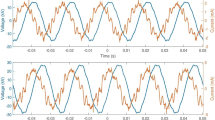Abstract
Vacuum cooling is a rapid evaporative cooling technique and can be used for pre-cooling of leafy vegetables, mushroom, bakery, fishery, sauces, cooked food, meat and particulate foods. The aim of this study was to apply the vacuum cooling and the conventional cooling techniques for the cooling of the meatball and to show the vacuum pressure effect on the cooling time, the temperature decrease and microbial growth rate. The results of the vacuum cooling and the conventional cooling (cooling in the refrigerator) were compared with each other for different temperatures. The study shows that the conventional cooling was much slower than the vacuum cooling. Moreover, the microbial growth rate of the vacuum cooling was extremely low compared with the conventional cooling. Thus, the lowest microbial growth occurred at 0.7 kPa and the highest microbial growth was observed at 1.5 kPa for the vacuum cooling. The mass loss ratio for the conventional cooling and vacuum cooling was about 5 and 9% respectively.





Similar content being viewed by others
References
Bredahl L (1998). Consumers perception of meat quality. In: Challenges for the meat industry in the next millennium. International conference, Dublin, Ireland
Burfoot D, Pelf KP, Hudson WR, Wilkins TJ, James SJ (1990) Effect of cooking and cooling method on the processing times, mass losses and bacterial condition of large meat joints. Int J Food Sci Technol 25:657–667
Colak H, Hampıkyan H, Bingol EB, Aksu H (2008) The effect of nisin and bovine lactoferrin on the microbiological quality of Turkish-style meatball (Tekirdağ Kofte). J Food Saf 28(3):355–375
Desmond E, Kenny T, Ward P, Sun DW (2000) Effect of rapid and conventional cooling methods on the quality of cooked ham joints. Meat Sci 56:271–277
Drummond L, Sun DW (2012) Evaluation of the immersion vacuum cooling of cooked beef joints—mathematical simulation of variations in beef size and porosity and pressure reduction rates. Innov Food Sci Emerg Technol 16:205–210
Drummond L, Zheng L, Sun DW (2014) Vacuum cooling of foods. In: Sun D-W (ed) Emerging technologies for food processing, 2nd edn. Academic Press / Elsevier, San Diego, California, USA, pp 477–494
Everington DW (1993) Vacuum technology for food processing. In: Turner A (ed) Food technology international Europe. Sterling Publications Ltd, London, pp 71–74
Feng CH, Drummond L, Zhang ZH, Sun DW (2013) Effects of processing parameters on immersion vacuum cooling time and physico-chemical properties of pork hams. Meat Sci 95(2):425–432
Feng CH, Drummond L, Zhang ZH, Sun DW (2014) Evaluation of innovative immersion vacuum cooling with different pressure reduction rates and agitation for cooked sausages stuffed in natural or artificial casing. LWT Food Sci Technol 59(1):77–85
He SY, Yu YQ, Zhang GC, Yang QR (2013) Effects of vacuum pre-cooling on quality of mushroom after cooling and storage. Adv mater res 699:189–193
Houska M, Sun DW, Landfeld A, Zhang Z (2003) Experimental study of vacuum cooling of cooked beef in soup. J Food Eng 59:105–110
Huber E, Laurindo JB (2006) Determination of mass transfer coefficients during the vacuum cooling of pre-cooked meat cuts. Int J Food Prop 9:287–298
Huber E, Lauringo JB (2005) Weight loss of precooked chicken breast cooled by vacuum application. J Food Process Eng 28:299–312
Jackman P, Sun DW, Zheng L (2007) Effect of combined vacuum cooling and air blast cooling on processing time and cooling loss of large cooked beef joints. J Food Eng 81:266–271
Mc Donald K (1999) Safety in the cooling of large cooked meats. Food Sci Times 2:3–12
McDonald K, Sun DW (2001a) Effect of evacuation rate on the vacuum cooling process of a cooked beef product. J Food Eng 48(3):195–202
McDonald K, Sun DW (2001b) The formation of pores and their effects in a cooked beef product on the efficiency of vacuum cooling. J Food Eng 47(3):175–183
Mc Donald K, Sun DW, Kenny T (2000) Comparison of the quality of cooked beef products cooled by vacuum cooling and by conventional cooling. LWT Food Sci Technol 33:21–29
Ozturk HM, Ozturk HK (2009) Effect of pressure on the vacuum cooling of iceberg lettuce. Int J Refrig 32(3):402–410
Ozturk HM, Ozturk HK, Kocar G (2011) Comparison of vacuum cooling with conventional cooling for purslane. Int J Food Eng 7(6):1–16
Rennie TJ, Raghavan GSV, Vigneault C, Gariepy Y (2001) Vacuum cooling of lettuce with various rates of pressure reduction. Trans ASAE 44:89–93
Schmidt FC, Laurindo JB (2014) Alternative processing strategies to reduce the weight loss of cooked chicken breast fillets subjected to vacuum cooling. J Food Eng 128:10–16
Schmidt FC, Aragão GMF, Laurindo JB (2010) Integrated cooking and vacuum cooling of chicken breast cuts in a single vessel. J Food Eng 100(2):219–224
Song XY, Liu BL, Jaganathan GK (2016) Mathematical simulation on the surface temperature variation of fresh-cut leafy vegetable during vacuum cooling. Int J Refrig 65:228–237
Sun DW, Brosnan T (1999) Extension of the vase life of cut daffodil flowers by rapid vacuum cooling. Int J Refrig 22:472–478
Sun DW, Wang LJ (2000) Heat transfer characteristics of cooked meats using different cooling methods. Int J Refrig 23:508–516
Wang LJ, Sun DW (2002) Modelling vacuum cooling process of cooked meat—Part 1: analysis of vacuum cooling system. Int J Refrig 25:854–861
Zhang Z, Drummond L, Sun DW (2013) Vacuum cooling in bulk of beef pieces of different sizes and shape—evaluation and comparison to conventional cooling methods. J Food Eng 116(2):581–587
Zhang Z, Zhang Y, Su T, Zhang W, Zhao L, Li X (2014) Heat and mass transfer of vacuum cooling for porous foods-parameter sensitivity analysis. Math Probl Eng 2014:1–8. doi:10.1155/2014/613028
Acknowledgements
The authors are grateful to TUBITAK (Scientific and Technological Research Council of Turkey) for the financial support of the project entitled “Developing a Vacuum Cooling System and Application in the Food Industry” (Project Number: 106 M 262) and Pamukkale University in Turkey.
Author information
Authors and Affiliations
Corresponding author
Rights and permissions
About this article
Cite this article
Ozturk, H.M., Ozturk, H.K. & Koçar, G. Microbial analysis of meatballs cooled with vacuum and conventional cooling. J Food Sci Technol 54, 2825–2832 (2017). https://doi.org/10.1007/s13197-017-2720-7
Revised:
Accepted:
Published:
Issue Date:
DOI: https://doi.org/10.1007/s13197-017-2720-7




